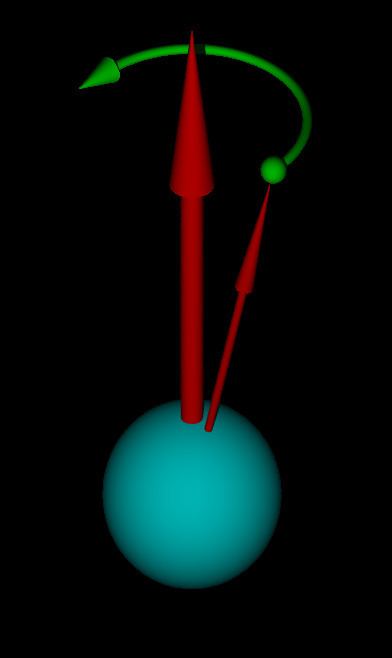 | ||
In physics, Larmor precession (named after Joseph Larmor) is the precession of the magnetic moment of any object with a magnetic moment about an external magnetic field. Objects with magnetic moments have angular momentum and internal currents of electric charge related to their angular momentum; these include electrons, protons, other fermions, many atomic and nuclear systems, as well as classical macroscopic systems. The magnetic field exerts a torque on the magnetic moment,
Contents
- Larmor frequency
- Including Thomas precession
- BargmannMichelTelegdi equation
- Applications
- Precession direction
- References
where
Larmor frequency
The angular momentum vector
where
In nuclear physics the g-factor of a given system includes the effect of the nucleon spins, their orbital angular momenta, and their couplings. Generally, the g-factors are very difficult to calculate for such many-body systems, but they have been measured to high precision for most nuclei. The Larmor frequency is important in NMR spectroscopy. The gyromagnetic ratios, which give the Larmor frequencies at a given magnetic field strength, have been measured and tabulated here.
Crucially, the Larmor frequency is independent of the polar angle between the applied magnetic field and the magnetic moment direction. This is what makes it a key concept in fields such as nuclear magnetic resonance (NMR) and electron paramagnetic resonance (EPR), since the precession rate does not depend on the spatial orientation of the spins.
Including Thomas precession
The above equation is the one that is used in most applications. However, a full treatment must include the effects of Thomas precession, yielding the equation (in CGS units):
where
Bargmann–Michel–Telegdi equation
The spin precession of an electron in an external electromagnetic field is described by the Bargmann–Michel–Telegdi (BMT) equation
where
one can rewrite the first term on the right side of the BMT equation as
When electromagnetic fields are uniform in space or when gradient forces like
The BMT equation is then written as
The Beam-Optical version of the Thomas-BMT, from the Quantum Theory of Charged-Particle Beam Optics, applicable in accelerator optics
Applications
A 1935 paper published by Lev Landau and Evgeny Lifshitz predicted the existence of ferromagnetic resonance of the Larmor precession, which was independently verified in experiments by J. H. E. Griffiths (UK) and E. K. Zavoiskij (USSR) in 1946.
Larmor precession is important in nuclear magnetic resonance, magnetic resonance imaging, electron paramagnetic resonance and muon spin resonance. It is also important for the alignment of cosmic dust grains, which is a cause of the polarization of starlight.
To calculate the spin of a particle in a magnetic field, one must also take into account Thomas precession.
Precession direction
The spin angular momentum of an electron precesses counter-clockwise about the direction of the magnetic field. An electron has a negative charge, so the direction of magnetic moment is opposite to that of its spin.
